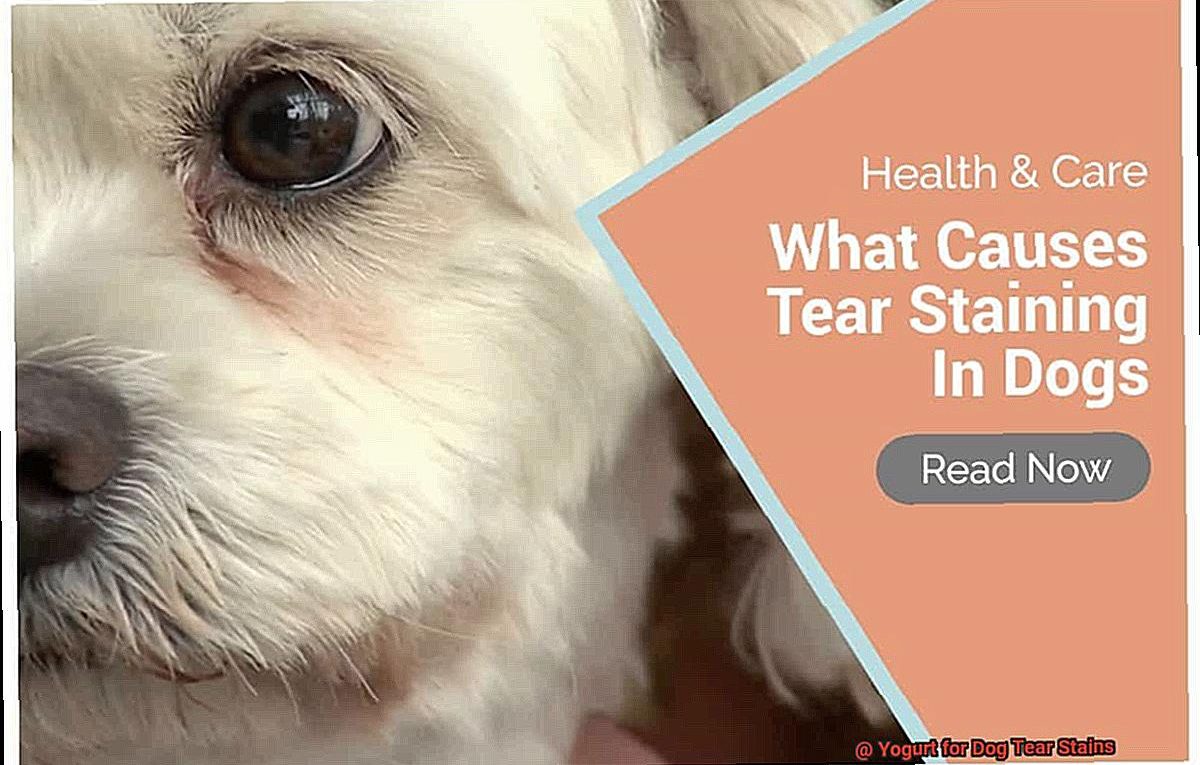Yogurt for Dog Tear Stains?
Want to keep your pup’s eyes healthy and clear? Yogurt is the answer. Not only is it natural, but it also has many additional benefits.
In this blog post, we’ll explore how yogurt can help reduce dog tear stains, reduce inflammation, provide essential vitamins and minerals, and even improve your pet’s immune system.
We’ll also give you some tips and tricks to get the most out of using yogurt as part of your pup’s daily care routine.
So if you’re looking for a simple and natural way to keep your dog’s eyes healthy and clear, read on.
Causes of Dog Tear Stains
Contents
- 1 Causes of Dog Tear Stains
- 2 Signs and Symptoms of Dog Tear Stains
- 3 Yogurt as a Solution to Dog Tear Stains
- 4 Benefits of Using Yogurt for Dog Tear Stains
- 5 How to Use Yogurt for Dog Tear Stains
- 6 Potential Side Effects of Using Yogurt for Dog Tear Stains
- 7 Alternatives to Yogurt for Treating Dog Tear Stains
- 8 Tips on Preventing Dog Tear Stains
- 9 Conclusion
Do you have a pup with tear stains? Those tell-tale marks can be more than just a badge of honor – they can be indicative of a bigger issue.
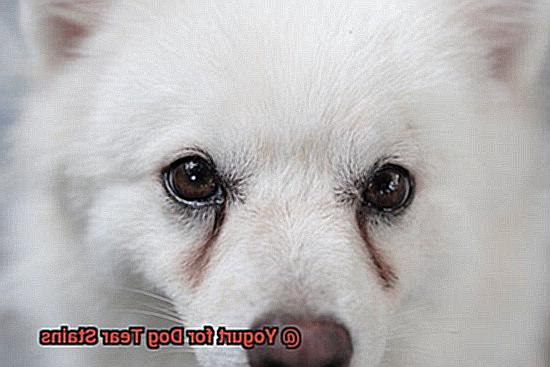
Tear stains are caused by a variety of factors, including genetics, allergies, and environmental irritants.
When it comes to genetics, certain breeds are more prone to tear stains than others.
Allergies can also contribute to an increase in tear production and result in staining around the eyes.
Pollen, dust mites, or other allergens in the environment can cause allergy symptoms and lead to tear staining.
Diet is another factor that can affect tear staining.
Foods high in sugar or processed foods can increase the likelihood of tears stains.
Eye infections, blocked tear ducts, and overactive tear glands are all potential causes as well.
The best way to prevent tear staining is to find the underlying cause and then take steps to fix it.
With some detective work and patience, you may be able to help your pup get rid of those tell-tale marks for good.
Signs and Symptoms of Dog Tear Stains
No matter how much you love your pup, tear stains can be a red alert for something wrong.
These red or brown patches around the eyes are like a warning sign, letting you know that your furry friend needs help.
The causes of tear stains can range from allergies to poor nutrition to eye infections.
So if your dog is displaying signs of excessive tearing, redness around the eyes, crusty discharge, and irritation, it’s time to take them to the vet.
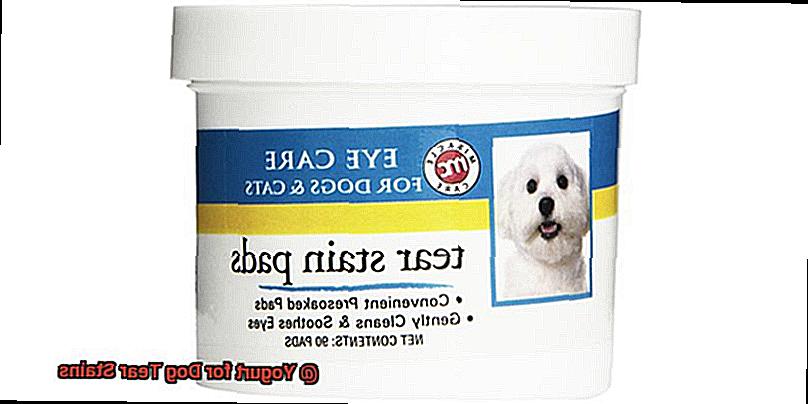
Yogurt as a Solution to Dog Tear Stains
If your pup’s tear stains are causing you distress, yogurt could be the answer.
This probiotic food is packed with beneficial bacteria that can help to balance their gut flora and digestion, reducing the amount of waste that causes tear stains.
Plus, it contains lactic acid which can break down any existing staining on their fur.
But don’t just grab any yogurt off the shelf – make sure it’s plain, with no added sugar or artificial sweeteners.
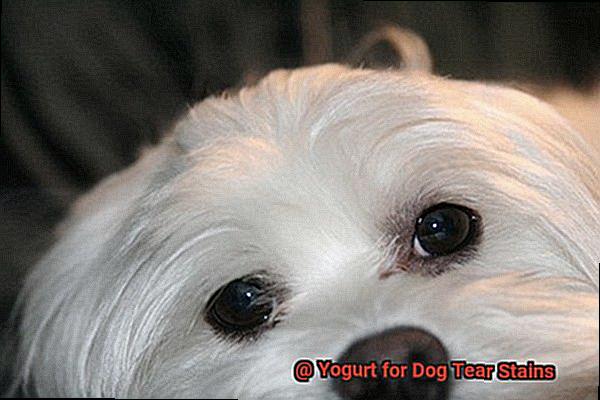
Introducing it too quickly could upset your pup’s stomach, so start slow – add a teaspoon to their food once or twice a day and watch as the tears stains gradually disappear.
Benefits of Using Yogurt for Dog Tear Stains
Tear stains on your pup can be an embarrassing sight, but yogurt is a natural and effective solution. Not only does it help reduce inflammation and irritation that causes staining, but it also has numerous health benefits.
Yogurt contains probiotics that can help keep the digestive system in balance, strengthen the immune system, and break down food particles that may be causing the tear stains.
It’s also rich in vitamins and minerals to promote healthy skin and coat, as well as protein and calcium for strong bones and muscles.

How to Use Yogurt for Dog Tear Stains
Potential Side Effects of Using Yogurt for Dog Tear Stains
Tear stains are a common problem for many pup owners, but did you know that yogurt can be a great way to keep your dog’s fur clean and healthy? While it’s generally considered safe, there are potential side effects to watch out for.
Diarrhea, vomiting, and an upset stomach are the most common side effects associated with using yogurt on your pup’s tear stains.
If you notice any of these signs after giving your dog yogurt, discontinue use immediately and consult your veterinarian.
It is also important to be aware of allergic reactions such as hives, swelling around the face and mouth, difficulty breathing, or excessive itching.
Allergies to yogurt or lactose intolerance in dogs can be dangerous, so it’s best to start with caution.
And don’t forget that yogurt is high in sugar and can lead to weight gain if eaten in large amounts.
Alternatives to Yogurt for Treating Dog Tear Stains
There are several natural remedies that can help reduce the appearance of dog tear stains.
Coconut oil is a great choice for removing tear stains.
Not only does it contain lauric acid, which has antibacterial and antifungal properties, but it is also rich in vitamin E that helps to reduce inflammation and promote healing.
Apple cider vinegar is another popular home remedy for dog tear stains.
It has antibacterial and antifungal properties that help combat bacteria on the skin’s surface, as well as balancing the skin’s pH to minimize irritation and inflammation associated with tear staining.
Aloe vera is an age-old remedy that can be used to treat dog tear stains.
Its anti-inflammatory properties help reduce swelling and redness related to the condition, while also helping to keep the area hydrated and free of bacteria and other irritants that can cause staining.
And lastly, honey is a great way to remove dog tear stains too. Its antibacterial properties aid in the fight against bacteria on the skin surface while also providing a soothing sensation to irritated or inflamed areas of the skin caused by tear staining.
Plus, honey helps lock in moisture so the area stays hydrated and healthy looking.
Tips on Preventing Dog Tear Stains
Hydrate for Health and Happiness
Water is essential for keeping your pup healthy and happy.
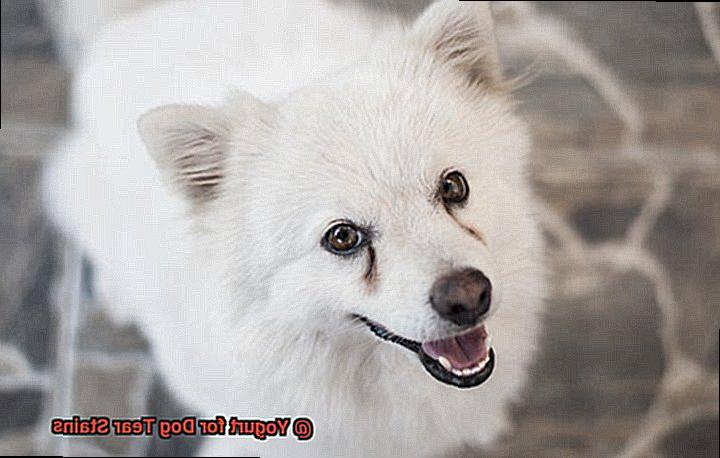
Make sure your pup has access to fresh, clean water at all times, and try adding a few drops of low-sodium chicken or beef broth to their drinking water to encourage them to drink more.
This can help reduce tear staining caused by dehydration.
Diet Matters
To prevent excessive tearing, check the ingredients in your pup’s food to ensure they are getting a balanced diet that includes all essential vitamins and minerals.
You may also want to consider adding vitamins or probiotics to their diet, as these may help minimize tear staining.
Keep it Clean
Regularly cleaning your pup’s face with a damp cloth will help keep the area around their eyes free of bacteria that could cause irritation and staining.
If you notice any redness or irritation in the region, consult with your veterinarian for advice on how to treat it properly and safely.
Allergens are Gone
If your pup is showing signs of allergies, such as excessive tearing, try to keep them away from allergens such as pollen, dust mites, and other irritants that may be triggering the condition.
Applying yogurt directly to the affected area may also help reduce tear staining in some cases.
Playtime is Prime Time
Finally, make sure your pup gets plenty of exercise and playtime each day. Exercise helps reduce anxiety which can lead to tear staining, so get outside with your pup or play indoors with toys or treats. Exercise helps them stay healthy – a win-win situation.
Conclusion
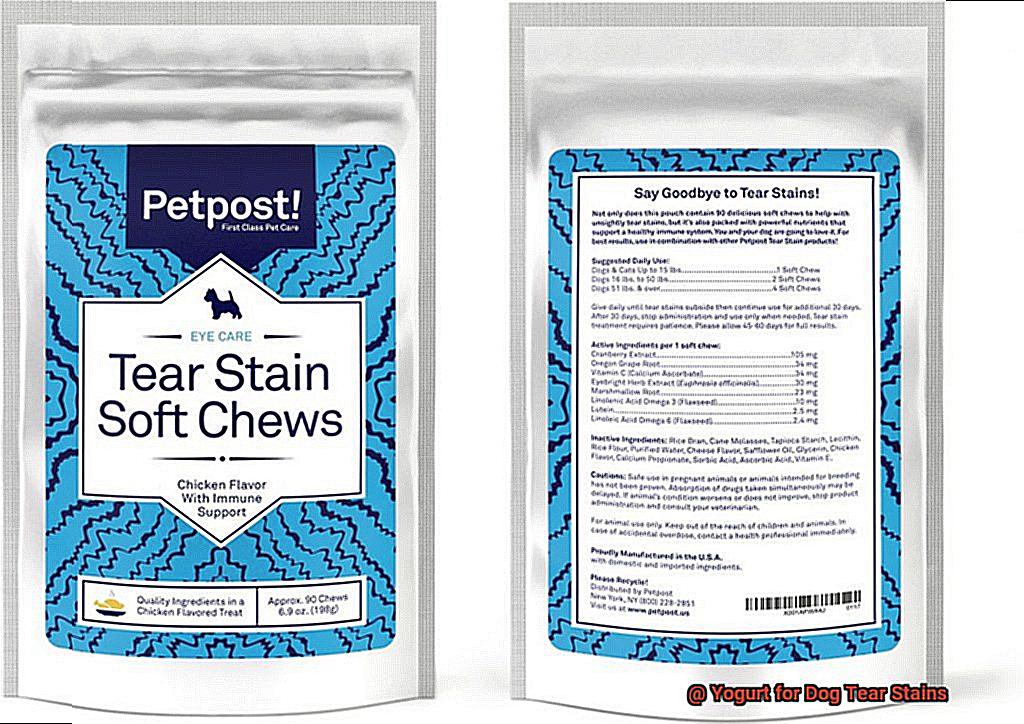
Tired of your pup’s tear stains? Yogurt can be the natural remedy you’ve been looking for.
Not only does it help reduce inflammation and inflammation that causes staining, but it also has many health benefits.
It’s a probiotic that keeps the digestive system in balance, boosts the immune system, and breaks down food particles that may be causing the tear stains.
Plus, it’s packed with vitamins and minerals to support healthy skin and coat, as well as protein and calcium for strong bones and muscles.
It may take several weeks or months before you start seeing results from using natural remedies such as yogurt.
But if you stay consistent with treatment, you’ll eventually see an improvement in those tell-tale marks.
Just make sure to watch out for potential side effects like diarrhea, vomiting, or upset stomachs – and don’t forget preventative steps like getting enough sleep each day, drinking plenty of fresh water each day, shaving excess hair around their eyes, avoiding allergens such as pollen or dust mites, and giving them a balanced diet rich in essential vitamins and minerals.
